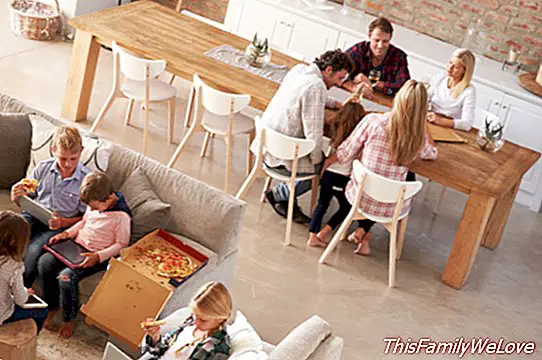The majority of homes are made up of 2.5 people
Living and living together as a family is still the most common, according to the 2015 Continuous Household Survey carried out by the National Institute of Statistics, INE, which shows thatThe most frequent homes are still those formed by two people, which represent the 30.6 percent of the total. In Spain the total number of domiciles amounts to 18,346,200 in 2015.
This data means a 0.2% increase over the previous year; that is, during the past year43,100 more homes were created.
This is indicated by the Continuous Household Survey, published by the INE, which each year is responsible for analyzing the situation of housing in Spain and how these homes are made up. This study also notes that the growth in the number of households occurred as a result of the reduction in the number of people They live in each house, so that the number of Spaniards is spread more, that is, there are more homes, but inhabited by fewer tenants. Despite this, the INE indicates that the average remains in the 2.51 inhabitants per dwelling; a data similar to last year.
The homes formed by two people are the most common
This survey reveals that 11,213,500 people live in a household made up of two inhabitants. That is, in just over 5.6 million of the 18,346,200 homes in our country, 30.6% of the total, live only two people. The next most common home in Spain, according to the INE, is one in which there is only one tenant; in particular 4,584,200 (10% of the population of our country) is the number of Spaniards living alone, this home makes up 25%.
These two types of households increased: by 0.2% in the case of dwellings with two inhabitants and by 1.1% in those of a single tenant. In turn, and this is also a worrying fact, households with four people decreased by 0.1% and in 2015, 3,243,200 were recorded compared to 3,247,100 in 2014. Furthermore, households with five or more were reduced. more people: a total of 1,057,300 were computed while in 2014 this figure was 1,074,200, which means a decrease of 1.6%.
The households formed by couples are the most numerous

In total, 10.1 million households are made up of couples with or without children. Specifically in 2.78 million households live couples with two children, in 569,000 households live couples with three or more children, 2.91 million households are formed by couples with one child, and 3.87 million households are formed by couples without children . Married couples account for 85.5% of the total and couples in fact 14.5%.
Households of single-parent families grew the most
This study also shows the evolution of households taking into account the type of family that makes them up. That is to say, if in the domicile there are couples without children or with them and the number of these; or if on the contrary it is one of the parents who lives next to his son, that is, a single-parent family.
Households comprising single-parent families are the ones that grew the most in 2015. While in 2014 there were 1,754,700 homes formed by a father and his son, in 2015 that number grew to 1,897,500, which represented an increase of 8%. ,one%. Within this group, the type of housing that grew the most was that of a father and his son: it increased by 16.9%, while in the case of mothers, the increase was 8.1%.
In most cases of single-parent families formed by a mother and her child, the main cause of the absence of a couple was widowhood, specifically in 38.5% of these households. Regarding the age of the parent, this was greater at 65 years in 38.2% of the cases while the parents of a single-parent home under 35 did not exceed 5%.
Poverty risk
The increase in single-parent families has a clear risk: there are several studies that affirm that children who grow up in this type of household have a greater risk of poverty. For example, last summer Save The Children alerted in its report 'More alone than ever' about the situation of single mothers, noting that more than half of the children living with their mothers are at risk of poverty.
In particular, the study of this organization ensured that 65% of women living in single-parent households had difficulties in reaching the end of the month, while three out of four single mothers had to reduce the fixed costs of the home.
According to Save The Children, the reasons why single-parent families are at greater risk of poverty are the lack of job opportunities, the problem of housing, the precariousness of health or lack of support.
In this line, the NGO recalled that economic precariousness directly affects the health of mothers and children.In fact, one in four single mothers admitted that they could not buy medicines or follow a treatment because they could not afford it.
Damián Montero




